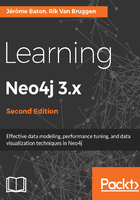
Social studies
For the longest time, people have understood that the way humans interact with one another is actually very easy to describe in a network. People interact with people every day. People influence one another every day. People exchange ideas every day. As they do, these interactions cause ripple effects through the social environment that they inhabit. Modelling these interactions as a graph has been of primary importance to better understand global demographics, political movements, and--last, but not least--the commercial adoption of certain products by certain groups. With the advent of online social networks, this graph-based approach to social understanding has taken a whole new direction. Companies such as Google, Facebook, Twitter, LinkedIn, and many others have undertaken very specific efforts to include graph-based systems in the way they target their customers and users, and in doing so, they have changed many of our daily lives quite fundamentally. See the following diagram, featuring a visualization of my LinkedIn network:
